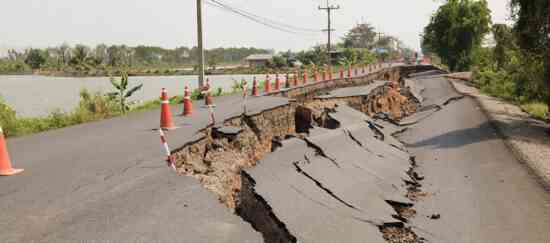Earthquake — a natural phenomenon that is always capable of demonstrating to mankind its helplessness before the forces of the Earth. In addition to the fact that any sufficiently strong earthquake can destroy an entire city, it can also lead to other equally destructive consequences, such as tsunamis or volcanic eruptions.
Interesting facts about earthquakes
- The ancient Incas, who knew firsthand earthquakes, built their stone structures so that they could withstand any, even the most destructive earthquake.
- The most powerful earthquake in the history of observations occurred in Chile in 1960 year. Its strength was 9.5 on the Richter scale, and it generated a tsunami wave that stretched for 10 thousand kilometers.
- About 1,500 earthquakes occur in Japan every year. In Chile — about the same.
- Earthquakes happen not only on Earth — on the moon, for example, they also happen, but they are usually called moonquakes (interesting facts about the moon).
- In 1811, a powerful earthquake in the United States for some time reversed the flow of the huge Mississippi River.
- In 2015, Nepal suffered another powerful earthquake that pretty much battered the capital of the country, the city of Kathmandu. The height of the greatest peak in the world, Everest, as a result of this earthquake, decreased by two and a half centimeters.
- The first seismograph was created in ancient China in 132.
- Each year, the Earth is shaken by about half a million earthquakes, but only a hundred thousand of them can be felt, and about a hundred of them cause some kind of damage (interesting facts about the Earth).
- 8 out of 10 of all large earthquakes occur in the Pacific ring of fire.
- The deadliest earthquake in the history of human civilization was the one that shook the Mediterranean in 1201 AD and claimed the lives of more than a million people.
- During a powerful earthquake, hundreds and thousands of energy are released times more than the explosion of an average atomic bomb.
- The longest earthquake, which lasted almost ten minutes, occurred in 2004 under the Indian Ocean.
- In the USA, in the California city of Parkfield, there is a bridge, notable for the fact that both ends of it stand on different tectonic plates.
- In the southern hemisphere On our planet, earthquakes occur less frequently than in the North.
- Ground waves as a result of shocks can move at speeds up to 350-360 kilometers per hour. Faster waves, at least, have not yet been observed. Fortunately.
- A strong earthquake in 2010 caused the Chilean city of Concepción to move 3 meters to the side.
